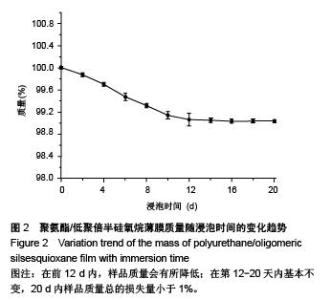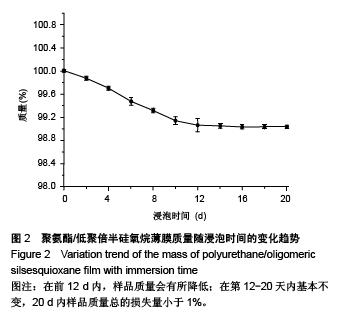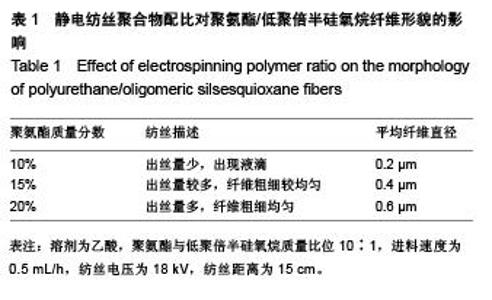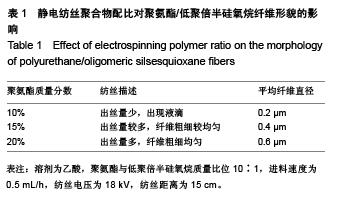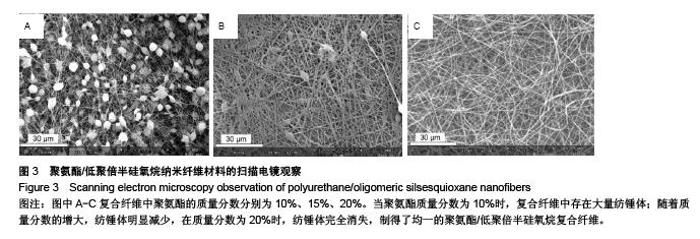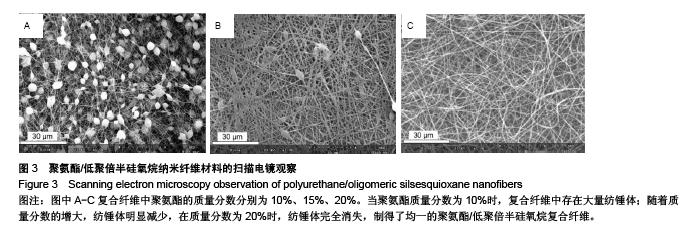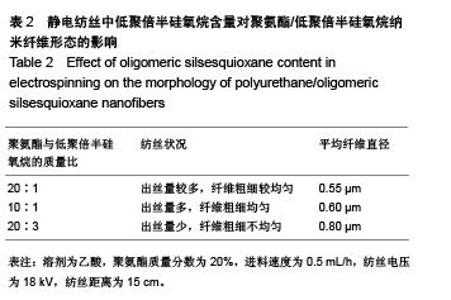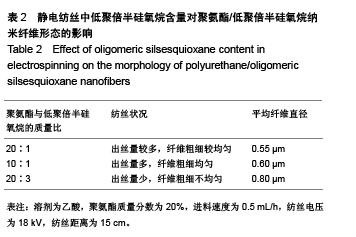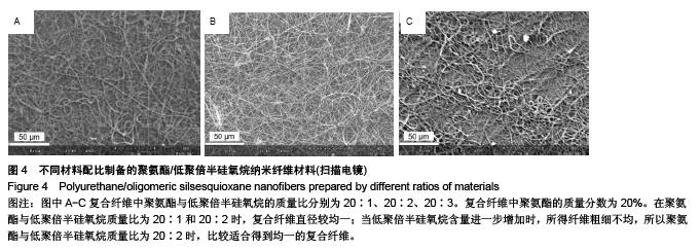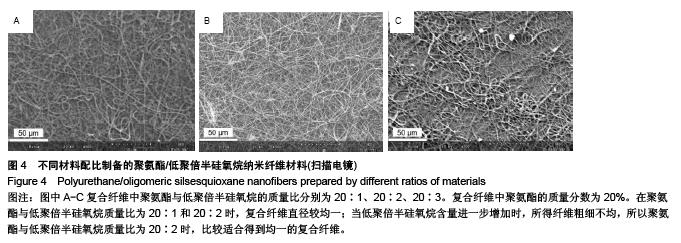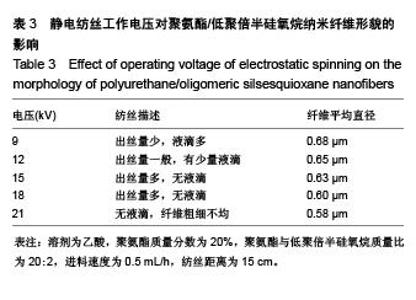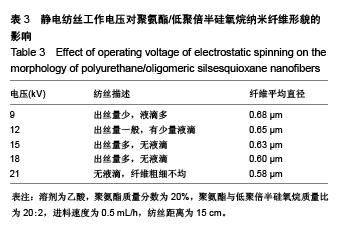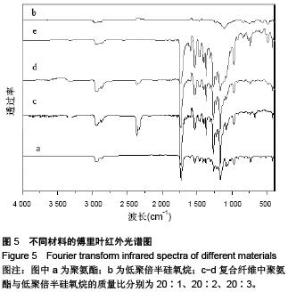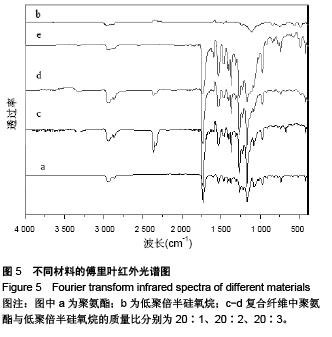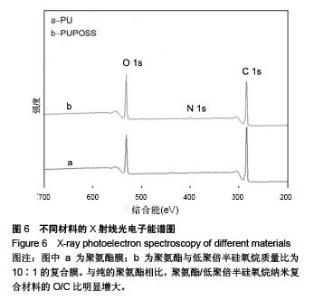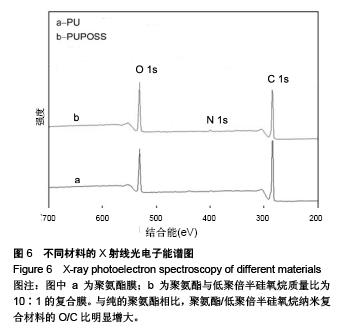Chinese Journal of Tissue Engineering Research ›› 2015, Vol. 19 ›› Issue (52): 8467-8472.doi: 10.3969/j.issn.2095-4344.2015.52.019
Previous Articles Next Articles
Preparation of polyurethane/polyhedral oligomeric silsesquioxane nanocomposite fibers
Xiao Rong-dong1, 2, Weng Guo-xing1
- 1Provincial Clinical College of Fujian Medical University, Fuzhou 350001, Fujian Province, China; 2Department of Cardiovascular Surgery, Fujian Institute of Cardiovascular Disease, Fuzhou 350001, Fujian Province, China
-
Received:2015-10-24Online:2015-12-17Published:2015-12-17 -
About author:Xiao Rong-dong, M.D., Associate chief physician, Provincial Clinical College of Fujian Medical University, Fuzhou 350001, Fujian Province, China; Department of Cardiovascular Surgery, Fujian Institute of Cardiovascular Disease, Fuzhou 350001, Fujian Province, China -
Supported by:the Social Development Program of Fujian Province of China, No. 2013Y0027
CLC Number:
Cite this article
Xiao Rong-dong, Weng Guo-xing. Preparation of polyurethane/polyhedral oligomeric silsesquioxane nanocomposite fibers[J]. Chinese Journal of Tissue Engineering Research, 2015, 19(52): 8467-8472.
share this article
| [1] Wang DA,Ji J,Sun YH,et al.Blends of stearyl poly(ethylene oxide) coupling-polymer in chitosan as coating materials for polyurethane intravascular catheters.J Biomed Mater Res. 2001;58:372-383.[2] Wang DA,Ji J,Gao CY,et al.Surface coating of stearyl poly(ethylene oxide) coupling-polymer on polyurethane guiding catheters with poly(ether urethane) film-building additive for biomedical applications. Biomaterials. 2001;22: 1549-1562. [3] Santerre JP,Woodhouse K,Laroche G,et al.Understanding the biodegradation of polyurethanes: from classical implants to tissue engineering materials. Biomaterials. 2005;26:7457- 7470.[4] Miyamoto K,Sugimoto T,Okada M,et al.Usefulness of polyurethane for small-caliber vascular prostheses in comparison with antologous vein graft.J Artif Organs.2002; 5(2):113-116.[5] Anderson JM,Hiltner RA,Wiggins MJ,et al.Recent advance in biomedical-polyurethane biostability and biodegradation.Polymer International.1998;46(3):163-171.[6] Dragganova PM.Biocompatible and biodegrable polyurethane polymers. Biomaterials.1993;4(1):1024-1029.[7] Michael S. Polyurethanes in vascular grafts. Rubber World. 1998, 218(1): 44-46. [8] Lin HB,Sun W,Mosher DF,et al.Synthesis, surface, and cell-adhesion properties of polyurethanes containing covalently grafted RGD-peptides.J Biomed Mater Res. 1994;28:329-342. [9] Utracki LA.Clay-containing Polymeric Nanocompositions. Shawbury shrewsbury Shropshire UK: Rapra Technology Limited,2004:66.[10] Li LH,Tu M,Mou SS,et al. Preparation and Blood Compatibility of Polysiloxane/Liquid-crystal Composite Membranes. Biomaterials.2001;22(16):2595-2599.[11] Kuo SW,Chang FC.POSS related polymer nanocomposites. Progress in Polymer Science. 2011;36(12):1649-1696.[12] Jovanovic J,Adnadjevic B,Kicanovic M,et al.The influence of hydroxyapatite modification on the cross-linking of polydimethylsiloxane/HAp composites.Colloids Surf B Biointerfaces.2004;39(1):181-186.[13] Tanaka K,Chujo Y.Advanced functional materials based on polyhedral oligomeric silsesquioxane (POSS).J Mater Chem. 2012;22(5):1733-1738.[14] Ponticiello MS,Schinagl RM,Cooper GM.Gelatin-based resorbable sponge as a carrier matrix for human mesenchymal stem cells in carlila-ge regeneration therapy.J Mater Sci. 2003;22(6):3829-3831.[15] Venugopal J,Ma LL,Yong T,et al.In vitro study of smooth muscle cells on popycaprolactone and collagen nanofibrous matrices.J Cell Bio Int.2005;29:861-867. [16] Kim YJ,Kwon OH.Crosslinked gelatin nanofibers and their potential for tissue engineering.Key Eng Mate.2007; 342/343: 169-172. [17] Huang ZM,Zhang YZ,Ramakrishna S.Double-layered composite nanofibers and their mechanical performance.J Polym Sci Part B:Polym Phys.2005;43(20):2852.[18] Zhao P,Jiang H,Pan H,et al.Biodegradable fibrous scaffolds composed of gelatin coated poly(epsilon-caprolactone) prepared by coaxial electrospinning.J Biomed Mater Res A.2007;83(2):372-382.[19] Pham QP,Sharma U,Mikos AG.Electrospinning of polymeric nanofibers fro tissue engineering applications: a review. Tissue Eng.2006;12:1197-1211.[20] Lannuttia J,Renekerb D,Mac T,et al.Electrospinning for tissue engineering scaffolds. Mater Sci Eng C.2007;27(3):504-509. |
| [1] | Chen Ziyang, Pu Rui, Deng Shuang, Yuan Lingyan. Regulatory effect of exosomes on exercise-mediated insulin resistance diseases [J]. Chinese Journal of Tissue Engineering Research, 2021, 25(25): 4089-4094. |
| [2] | Chen Yang, Huang Denggao, Gao Yuanhui, Wang Shunlan, Cao Hui, Zheng Linlin, He Haowei, Luo Siqin, Xiao Jingchuan, Zhang Yingai, Zhang Shufang. Low-intensity pulsed ultrasound promotes the proliferation and adhesion of human adipose-derived mesenchymal stem cells [J]. Chinese Journal of Tissue Engineering Research, 2021, 25(25): 3949-3955. |
| [3] | Yang Junhui, Luo Jinli, Yuan Xiaoping. Effects of human growth hormone on proliferation and osteogenic differentiation of human periodontal ligament stem cells [J]. Chinese Journal of Tissue Engineering Research, 2021, 25(25): 3956-3961. |
| [4] | Sun Jianwei, Yang Xinming, Zhang Ying. Effect of montelukast combined with bone marrow mesenchymal stem cell transplantation on spinal cord injury in rat models [J]. Chinese Journal of Tissue Engineering Research, 2021, 25(25): 3962-3969. |
| [5] | Gao Shan, Huang Dongjing, Hong Haiman, Jia Jingqiao, Meng Fei. Comparison on the curative effect of human placenta-derived mesenchymal stem cells and induced islet-like cells in gestational diabetes mellitus rats [J]. Chinese Journal of Tissue Engineering Research, 2021, 25(25): 3981-3987. |
| [6] | Hao Xiaona, Zhang Yingjie, Li Yuyun, Xu Tao. Bone marrow mesenchymal stem cells overexpressing prolyl oligopeptidase on the repair of liver fibrosis in rat models [J]. Chinese Journal of Tissue Engineering Research, 2021, 25(25): 3988-3993. |
| [7] | Liu Jianyou, Jia Zhongwei, Niu Jiawei, Cao Xinjie, Zhang Dong, Wei Jie. A new method for measuring the anteversion angle of the femoral neck by constructing the three-dimensional digital model of the femur [J]. Chinese Journal of Tissue Engineering Research, 2021, 25(24): 3779-3783. |
| [8] | Meng Lingjie, Qian Hui, Sheng Xiaolei, Lu Jianfeng, Huang Jianping, Qi Liangang, Liu Zongbao. Application of three-dimensional printing technology combined with bone cement in minimally invasive treatment of the collapsed Sanders III type of calcaneal fractures [J]. Chinese Journal of Tissue Engineering Research, 2021, 25(24): 3784-3789. |
| [9] | Qian Xuankun, Huang Hefei, Wu Chengcong, Liu Keting, Ou Hua, Zhang Jinpeng, Ren Jing, Wan Jianshan. Computer-assisted navigation combined with minimally invasive transforaminal lumbar interbody fusion for lumbar spondylolisthesis [J]. Chinese Journal of Tissue Engineering Research, 2021, 25(24): 3790-3795. |
| [10] | Hu Jing, Xiang Yang, Ye Chuan, Han Ziji. Three-dimensional printing assisted screw placement and freehand pedicle screw fixation in the treatment of thoracolumbar fractures: 1-year follow-up [J]. Chinese Journal of Tissue Engineering Research, 2021, 25(24): 3804-3809. |
| [11] | Shu Qihang, Liao Yijia, Xue Jingbo, Yan Yiguo, Wang Cheng. Three-dimensional finite element analysis of a new three-dimensional printed porous fusion cage for cervical vertebra [J]. Chinese Journal of Tissue Engineering Research, 2021, 25(24): 3810-3815. |
| [12] | Wang Yihan, Li Yang, Zhang Ling, Zhang Rui, Xu Ruida, Han Xiaofeng, Cheng Guangqi, Wang Weil. Application of three-dimensional visualization technology for digital orthopedics in the reduction and fixation of intertrochanteric fracture [J]. Chinese Journal of Tissue Engineering Research, 2021, 25(24): 3816-3820. |
| [13] | Sun Maji, Wang Qiuan, Zhang Xingchen, Guo Chong, Yuan Feng, Guo Kaijin. Development and biomechanical analysis of a new anterior cervical pedicle screw fixation system [J]. Chinese Journal of Tissue Engineering Research, 2021, 25(24): 3821-3825. |
| [14] | Lin Wang, Wang Yingying, Guo Weizhong, Yuan Cuihua, Xu Shenggui, Zhang Shenshen, Lin Chengshou. Adopting expanded lateral approach to enhance the mechanical stability and knee function for treating posterolateral column fracture of tibial plateau [J]. Chinese Journal of Tissue Engineering Research, 2021, 25(24): 3826-3827. |
| [15] | Zhu Yun, Chen Yu, Qiu Hao, Liu Dun, Jin Guorong, Chen Shimou, Weng Zheng. Finite element analysis for treatment of osteoporotic femoral fracture with far cortical locking screw [J]. Chinese Journal of Tissue Engineering Research, 2021, 25(24): 3832-3837. |
| Viewed | ||||||
|
Full text |
|
|||||
|
Abstract |
|
|||||
